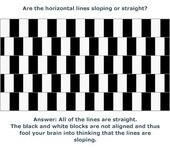chizelhead
WKR
Another system is the Wheeler leveling kit. I set my rifle in the cleaning stand to level. A vise would work as well.
Follow along with the video below to see how to install our site as a web app on your home screen.
Note: This feature may not be available in some browsers.
Is eyeballing good enough? Yes! Does it annoy the piss out of me when a week later I notice the 5ish degree offset from eyeballing for some reason? Also yes.
...and (with practice) it does get better over time.If you use a scope level on your rifle and check it prior to every shot you will probably observe that your natural cant is not consistent.
Is eyeballing good enough? Yes! Does it annoy the piss out of me when a week later I notice the 5ish degree offset from eyeballing for some reason?
Well, I have days, weeks, months too look at it in various settings, rather than a few minutes in a single setting.So you can do focused eyeballing of it and mount it to look as plumb to bore as you could visually discern but then days down the road you know its canted just from shouldering and looking through your optic after the fact? How does that work?

When I purposely unfocus my eyes I can easily tell they're parallel, but when they're focused they look canted as hell. And now I can't get them refocused and feel cross eyed the night before rifle elk opener. Thanks.Well, I have days, weeks, months too look at it in various settings, rather than a few minutes in a single setting.
Eyeballing is rather flawed. The same flaws can make something set correctly look off. An extra 30 seconds spares a lot of potential annoyance for me and is much less effort than repeatedly reminding myself why it is good enough.
View attachment 955363
If you mount a lot of scopes, the final level from SAC along with a plumb bob and flashlight works fast and accurate.
Litz had an article on this a while ago and the scope not being perfectly plumb to the bore resulted in next to nothing in deviation.
The offset does change with distance, but it remains minor relative to other variables.Unless you have a canted rail, the error due to the reticle not intersecting the bore is only the distance from the reticle post to the centerline of the bore.
I've been out of college a while now, but if I did this correctly a 0* base, scope mounted 3" above the bore and 3* off of intersection with the bore centerline, the error would be 0.15"
It's a tremendously minuscule factor in where the bullet will actually land once everything is taken into consideration and it does in fact not really matter EXCEPT that all it would take is a stupid reference mark to make it a non issue and I want my damn reference mark.
The offset does change with distance
No, it's true regardless of vertical cant if the bore line and scope LOS intersect at some distance in the horizontal plane. I.e., if you have a good zero at 100 yards, the bore axis and the scope axis cross at 100 yards and the horizontal paths continue to diverge. Using your example of 0.15" separation at 0 yards and 0 separation at 100 yards, approximated as ~0.15 MOA between the two axes, it's a small effect.That would only be true for a canted rail, correct?
regardless of vertical cant if the bore line and scope LOS intersect at some distance in the horizontal plane.
